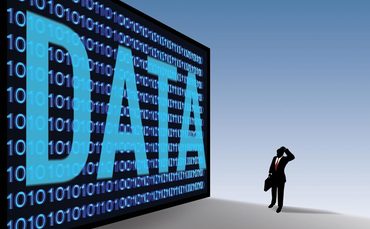Many companies have been unsuccessful in identifying the right data strategy that can give them sustained competitive advantage. Lack of data maturity has been a reason for this failure. To achieve their data ambitions, organizations need to focus on the impact areas based on available data and applied algorithms. Some companies have identified their most valuable set of data using technologies such as IoT, analytics sensors etc. They have successfully used their data sets to understand their customers and sell insights to their suppliers and third parties to create additional sources of revenue.
Let’s explore data monetizing models, pricing strategies, and how advanced analytics platforms help in generating insights which can help the businesses get their data monetization strategy right.
Data collection strategies
Companies can use various strategies to collect or acquire data. This can include both, organic and inorganic methods.
Collecting data from customers. Using this strategy, a company can understand their customers, take decisions related to marketing, store locations, and create hyper personalized solutions.
Partnering or purchasing data to create a data platform? Tools can be developed for estimation, forecasting, risk management and overall operational management
Acquire a company? Companies that are not able to process the data or not able to get the data required from any partnerships, could go for acquiring a company.
Building an ecosystem? A company that possesses a significant amount of proprietary data and can buy or partner for additional data may be able to orchestrate an ecosystem that other companies participate in.
For these strategies to create full impact, companies need to build a data-first culture. This can be done by investing in skills specific to using analytical insights. They should also run change management programs to create new mindsets and ways of working, and break silos by making cross-functional teams to share data and create new roles and governance process.
Data monetization operating models
The two main roadmaps for data strategy and monetization are internal and external. The first one focuses on leveraging company’s data to improve its operations, productivity, quality of its products and services, and marketing campaigns. The second focuses on increasing the number of revenue streams – sell data as a service, sell data platforms, and create personalized products for its customers and partners.
Analytics Platform as a Service. Companies use proprietary and sophisticated algorithms to generate highly personalized insights and data. Real-time insights are provided through a platform that is cloud based or self-service. Data analytics platform
Insights as a Service. Companies combine internal and external data sources, apply advanced analytics methodologies to provide insights to their customers. AkzoNobel provides an analytics based iOS app to its ship operators that provides performance prediction, financial predictions, and cost-benefit analysis thus enabling them to make informed decisions. They also provide a decision support model to its ship operators enabling energy cost savings. [8]
Data as a Service. This is one of the simplest models where data is aggregated, anonymized, and sold to partners and customers.
Improving Outcomes and Productivity. Companies use Big Data solutions, which help them analyze their costs, selling price, and marketing campaigns, thus improving their savings, profitability, services etc. A battery manufacturing company used data from inventory and datasets of order backlog to optimize raw materials costs, maximize selling price and increase margins.
Hurdles in the data monetization journey
Considering the sensitivity of data, any data monetization strategy must adhere to regulations like GDPR, HIPPA, and data protection acts of respective countries.
Consent Management. Getting the consent of consumers to use their data is the biggest challenge for companies. Companies have access to loads of valuable consumer data such as transactions, financials, and biometrics.
Data Governance. Companies should efficiently onboard diverse set of data, ensure right quality of data in the system, have the right security in place and should be able to trace insights to the data source.
Data Security. The most critical part is the safeguarding of consumer data. Companies should build capability in role-based masking, anonymization, encryption of data, and network safety to make sure data, be it personal or enterprise, is safe.
Pricing strategies for data monetization
Building a successful pricing strategy is one of the vital aspects for a data provider to have a successful data monetization strategy. The two primary strategies of pricing data products are: Cost-Based Pricing & Value Based Pricing
In cost-based pricing, the price is determined by adding a markup to the unit cost. Vendors need to determine the variable and fixed components that will be needed to build, maintain, and deliver the product. In value-based pricing, the value that customers derive from the product determines the cost of the product. This is not an easy task and requires many considerations and assessments. The pricing techniques that can be used are given in Table 1.
Potential data monetization market segments for health sector companies
Research Organizations. There has been a huge growth in the volume of data and real-world evidence. Harnessing this will provide a great opportunity to reimagine and develop new approaches to clinical development, speed innovation and improve clinical outcomes. Leveraging a robust big data analytics platform will enable companies to take advantage of data. Using advanced analytics methods such as machine learning and predictive modelling, data scientists are able to provide insights and predict challenges before they occur.
Innovators. Data sets in pharmaceutical innovators pose a challenge for analytics programs due to their complexity, density and diversity. To overcome this challenge, innovators can use robust data analytics platforms, for instance, through strategic partnerships that will enable them to improve efficiency, and clinical outcomes.
Providers. As the trend of patient-centric approaches for healthcare keeps increasing, the providers need to align accordingly. With increasing complexity in surgeries like robotics, providers will need to have a robust data analytics platform to cater to image data, patient data etc. Advanced analytics models need to be deployed to have better accuracy and efficiency in surgical performances. With the help of advanced analytics using business intelligence platform,
Payers. With the industry moving from volume-based care to value-based care, payers are faced with challenges to shift their business models. Payers will need data analytics tools to overcome the challenges and enable better revenue recognition, new payment models, better options to patients, and fraud detection. Oscar Health is using data to help its customers increase their awareness about care they are receiving.
Digital Health Startups. Digital health startups are increasingly using data to devise their product offering. They are well positioned to cater to the ever-changing consumer behaviors due to their agility and smaller size. With the help of data, they can provide more predictive healthcare offerings, detect disease outbreaks, and personalize offerings.
Reshaping healthcare with data monetization
As the volume and complexity of data keeps increasing, there will be ample opportunities for companies to monetize their data. Companies in the health domain can leverage their data to gain advantage by improving the efficiency of their own business unit and/or by selling services using the data. To overcome the complexity and regulatory challenges of data monetization, companies will need to have robust data analytics and AI capabilities, which will enable them to tackle high volume of data and empower them to generate real-time insights for their ecosystem of partners and customers.


Recent Comments